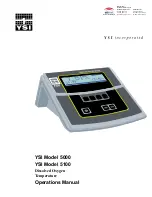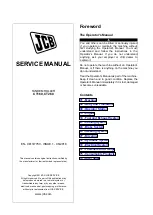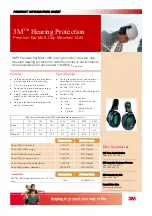
Page 48
Miscellaneous Operations
360 Systems
Bleep A File Segment
Offensive words in a recording may be censored by using the large blue Bleep button to
overwrite them with a "Bleep tone" or silence. This selection is made in the D
IRECTORY
P
REFERENCES
menu. There is also a setting to select the Bleep Level. (See the section on
B
LEEP
S
OURCE
on page 55.) Audio is non-destructively replaced with a Bleep tone while the
button is depressed.
Insert Bleep in A File While Stopped
•
At the Edit level, use the E
DIT
I
N
and E
DIT
O
UT
keys to highlight an offending
segment of audio.
•
While stopped, hold the I
NSERT
key down and press B
LEEP
. The Bleep tone (or
silence) will be inserted in place of the selected audio.
To Bleep A File In The Play Or Record Mode
•
Hold down the B
LEEP
button for the desired duration.
In Play mode, the B
LEEP
button replaces the normal audio output of the File being
played; it has no effect on the File itself.
In Record mode the B
LEEP
button appears to replace incoming audio with a tone. In fact,
the original audio is recorded to disc along with special marks that denote the placement of the
bleep tone. When the File is played back, the bleeped portions are automatically replaced by
the tone. When the File is edited, the bleeped portions appear as areas of constant level with
marks at either end.
While recording, it is sometimes desirable to monitor the input to the Editor instead of
the output. This is because when the recorded audio is replaced by a Bleep tone, the original
audio cannot be heard and it is not possible to tell when the Bleep button can be released.
To Bleep In The Idle Mode
•
Press the B
LEEP
button. Although source audio does not pass through the Editor
in this mode, it may be used to generate Bleep tones for external use.
Undo A Bleeped Region Of Audio
Any bleeped region can be restored to the original audio by selecting (highlighting) the
region containing a bleep, holding U
NDO
and pressing B
LEEP
.
Passwords
The Files stored in each Shortcut Directory can be protected from use or erasure by
requiring a password to gain access to a Directory. Directories 1 through 9 can be password
protected, while the Public Directory is always accessible and never requires a password. If the
user attempts to enter a password-protected directory, he will be prompted to enter a password.
The Shortcut Editor is shipped with the passwords feature
disabled
. This means that no
password is needed to enter any Directory. A designated "System Supervisor" at your facility
can enable passwords (or disable them) by invoking a S
PECIAL
menu. Access to the S
PECIAL
menu is described on a separate colored page that can be removed from the owner's manual to
restrict access to the information. Other features controlled in this manner include formatting
the hard disk. The System Supervisor may also have a master password.
Содержание Short/cut 2000 Audio Editor
Страница 8: ......
Страница 28: ...Page 20 Rear Panel Features 360 Systems This page left blank ...
















































